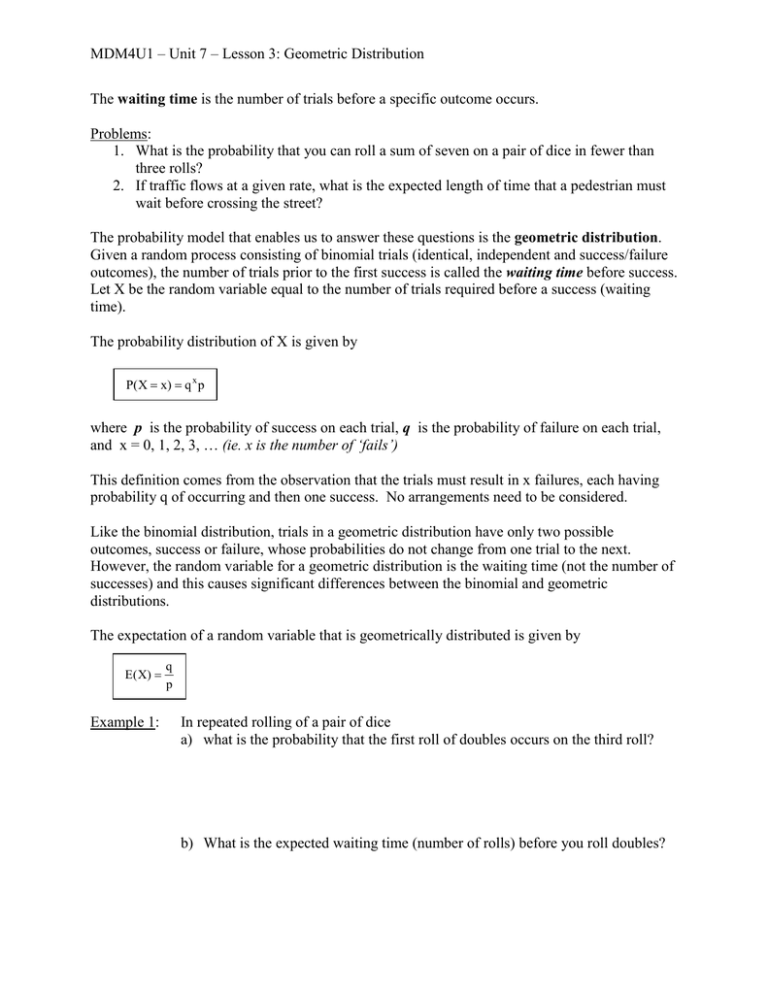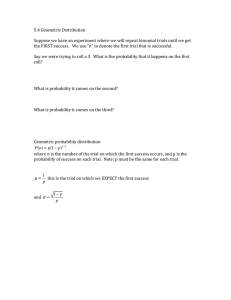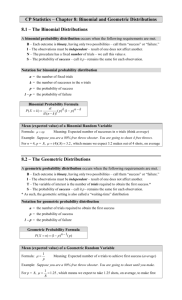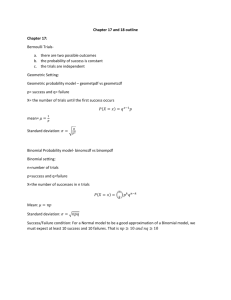MDM4U1 – Unit 7 – Lesson 3: Geometric Distribution waiting time Problems:
advertisement

MDM4U1 – Unit 7 – Lesson 3: Geometric Distribution The waiting time is the number of trials before a specific outcome occurs. Problems: 1. What is the probability that you can roll a sum of seven on a pair of dice in fewer than three rolls? 2. If traffic flows at a given rate, what is the expected length of time that a pedestrian must wait before crossing the street? The probability model that enables us to answer these questions is the geometric distribution. Given a random process consisting of binomial trials (identical, independent and success/failure outcomes), the number of trials prior to the first success is called the waiting time before success. Let X be the random variable equal to the number of trials required before a success (waiting time). The probability distribution of X is given by P( X x) q x p where p is the probability of success on each trial, q is the probability of failure on each trial, and x = 0, 1, 2, 3, … (ie. x is the number of ‘fails’) This definition comes from the observation that the trials must result in x failures, each having probability q of occurring and then one success. No arrangements need to be considered. Like the binomial distribution, trials in a geometric distribution have only two possible outcomes, success or failure, whose probabilities do not change from one trial to the next. However, the random variable for a geometric distribution is the waiting time (not the number of successes) and this causes significant differences between the binomial and geometric distributions. The expectation of a random variable that is geometrically distributed is given by E ( X) Example 1: q p In repeated rolling of a pair of dice a) what is the probability that the first roll of doubles occurs on the third roll? b) What is the expected waiting time (number of rolls) before you roll doubles? Example 2: In a gambling game a player tosses a coin until a head occurs. He then receives $2n, where n is the number of tosses. a) What is the probability that the player receives $8 in one play of the game? b) If the player must pay $5 to play, what is the win/loss per game? Example 3: What is the probability of rolling a sum of seven in fewer than three rolls of a pair of dice? Practice: Page 394 #1, 3-10 2







